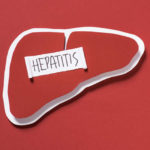Improves Outcome for Hep C Genotype 4
Nitazoxanide Demonstrates Activity in Treatment-Naive Patients With Hepatitis C Virus Genotype 4: Presented at EASL
By Emma Hitt, PhD
www.docguide.com
MILAN, Italy — April 29, 2008 — Nitazoxanide significantly improves response to pegylated interferon (PEG-IFN)-based therapy in patients with chronic hepatitis C virus genotype 4 (HCV-4), according to new research findings presented here at the 43rd Annual Meeting of the European Association for the Study of the Liver (EASL).
Jean-Francois Rossignol, MD, Research Scientist, and Cofounder, Romark Institute For Medical Research, Tampa, Florida, reported the results of a randomised trial of nitazoxanide, an oral agent that targets host-cell interactions with HCV. Dr. Rossignol and colleagues sought to evaluate the antiviral activity and safety of nitazoxanide in combination with PEG-IFN alfa-2a, with or without ribavirin.
A total of 120 patients with chronic HCV-4 were sequentially randomised to 1 of 3 treatment arms. The first arm was a standard-of-care arm: PEG-IFN alfa-2a plus ribavirin (RBV) for 48 weeks. The second arm was nitazoxanide for 12 weeks followed by nitazoxanide plus PEG-IFN alfa-2a for 36 weeks. The third arm was a triple therapy consisting of nitazoxanide for 12 weeks followed by nitazoxanide combined with PEG-IFN alfa-2a plus RBV for 36 weeks.
PEG-IFN alfa-2a was injected by clinical investigators at 180 mcg/kg/week while ribavirin was dosed at 1000 to 1200 mg/day. Nitazoxanide was administered at 500 mg twice daily with food.
Patients were previously untreated, with the exception of 12 interferon-experienced patients included in each of the nitazoxanide-containing arms.
During the monotherapy lead-in phase with nitazoxanide, a modest (0.25 log10) but statistically significant decrease in HCV ribonucleic acid (RNA) from baseline to week 12 was observed (P = .0032). Out of 76 patients, 5 had a drop in HCV RNA of greater than 1 log10 from baseline to week 12; and 1 patient had undetectable HCV RNA, with a 5.4 log10 decline in HCV RNA and normalised alanine aminotransferase (ALT) test results at week 12. There was no significant change in overall ALT measurements during the lead-in period.
Among the interferon-naive patients (n = 96), the patients receiving the triple regimen (nitazoxanide plus PEG-IFN plus RBV) achieved a higher sustained viral response (SVR) than the patients receiving the standard of care (79% vs 50%; P = .023). In the nitazoxanide arm without RBV, the SVR was 61%. The rapid viral response (RVR) was also higher in patients receiving the triple therapy compared with those receiving the standard of care (64% vs 38%; P = .048).
In the interferon-experienced patients (n = 24), no efficacy differences were observed between the 2 nitazoxanide-containing arms (not compared with standard of care).
“Adverse events in the overall population were characteristic of those typically observed with pegylated interferon and ribavirin, with no additional effects resulting from nitazoxanide,” Dr. Rossignol noted here on April 25. “Additional clinical trials of nitazoxanide in interferon-naive patients and nonresponders to pegylated interferon plus ribavirin have been initiated in patients with HCV genotype 1 in the United States and Europe.”
Nitazoxanide was initially developed as an antiprotozoal, antiviral, and antibacterial agent, and is approved for the treatment of diarrhoea caused by Cryptosporidium and Giardia in children. Nitazoxanide has since shown activity against HCV and hepatitis B virus.
[Presentation title: Randomized Controlled Trial of Nitazoxanide-Peginterferon-Ribavirin, Nitazoxanide-Peginterferon and Peginterferon-Ribavirin in the Treatment of Patients With Chronic Hepatitis C Genotype 4. Abstract 68]







